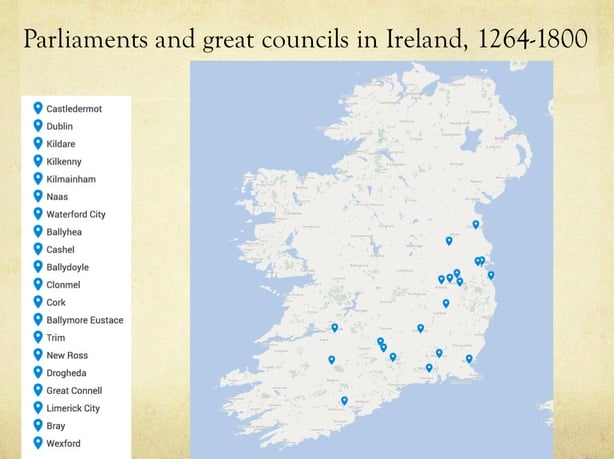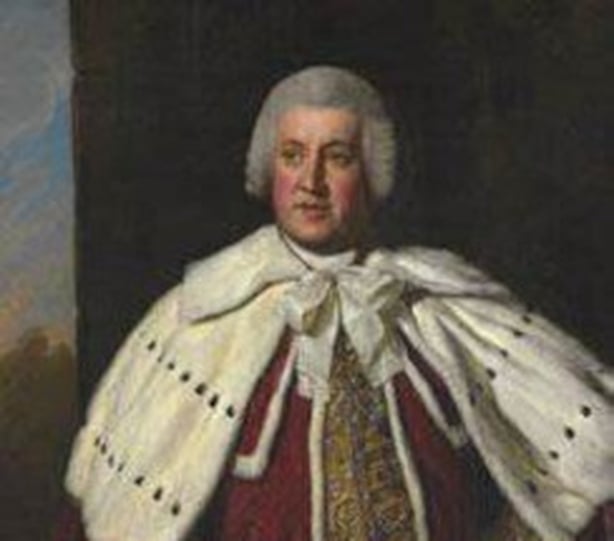Analysis: From potwalloper boroughs to 4am polls, elections in Ireland were often controversial, sometimes violent and at times absolutely absurd
By Coleman A. Dennehy, Dundalk Institute of Technology
It is important in the first instance to ask whether we are referring to an election, a selection or a contest. Contested elections were not always the norm and it was sometimes the case that prospective representatives would have to be leaned on to serve in parliament, as it could be an expensive and sometimes even dangerous role to fulfil. Whilst MPs in medieval and early modern Ireland were generally paid, parliaments could last years and it could mean difficult travelling conditions to get to where ever parliament may have been sitting, which was not always in Dublin.
A second issue is that whilst we might rightly use a term like 'representative', it would not be be accurate to use the term 'democratic'. The upper House of Lords contained spiritual lords (archbishops, bishops and, before the Reformation, some abbots and priors of significant religious houses) as well as secular lords who were always from the Anglo-Norman regions. None were elected.

Gaelic spiritual figures rarely sat and Gaelic secular lords were never summoned, at least until the Reformation-era act that converted the lordship of Ireland into a kingdom. Anglo-Norman districts of Ireland - mostly in Leinster and Munster but with some outposts in Connaught and Ulster - sent representatives to the lower House of Commons. In the early centuries, the Gaelic Irish were not represented, but the Anglo-Norman clergy and nobles were heavily represented.
The earliest representatives of county seats date to 1297 and representatives of individual towns (usually referred to as boroughs) were required to send MPs in the following years. However, it was not necessary that elected representatives of boroughs or shires who were always called in the following decades to what would eventually emerge as a separate House of Commons.
By 1666, the Irish House of Commons found its final form, numbering a total of 150 two-seater constituencies – 32 counties, 1 university constituency (Trinity College Dublin), and 117 boroughs, the latter were unevenly spread with Wexford having 18 MPs, but Mayo having just four. The reasons for this were varied and complex and could be down to locations, provincial economics, religious and ethnic population or sometimes just the political activity and influence of a patron.
In Dublin, they tried to hold a 4am election for fear free citizens might appear expecting to cast votes and prospective Cavan voters were blocked by armed soldiers
Whereas medieval Irish MPs might represent a relative religious and ethnic homogeneity where parliament was relevant, the Reformation and plantations of the 16th and 17th centuries saw a rise in political division that had not been witnessed before. Plantation brought Anglicisation to parts of Ireland that had not been touched by the Anglo-Normans and part of this was parliamentary representation.
In what were sometimes very short periods before parliament was convened, new boroughs were created with a tiny electorate, usually containing just 13 nominated (Protestant) electors. The 1613 general election is a case in point where several dozen seats were created overnight by the government in an effort to procure the first Protestant-majority House of Commons in Ireland.
As Dr Bríd McGrath has described, there was a substanial body of electoral law on the statute books but government regularly conspired to obviate its application in the period. In elections in the first half of the 17th century, violence was not uncommon as the government sought to ensure a Protestant majority.
From Cavan Library, Dr Bríd McGrath on the unconstitutional acts, violence, intimidation, vote-rigging, fraud and resistance which were the lot of Cavan's parliamentary elections in 1613
There was significant false recording of polls, the government occasionally jailed sheriffs who (correctly) returned an elected candidate who was not to their liking and polls were sometimes held a second time to elect 'the right candidate'. In Dublin they tried to hold a 4am election for fear free citizens might appear expecting to cast votes and prospective Cavan voters were blocked by armed soldiers with matches lit.
Once dominance by the New English colonial class over the Old English colonial population had been established, elections could become less fractured. As Dr Patrick Little has pointed out, the mid-1650s elections for the union Cromwellian parliament in London were clam. In Cork, the most significant landowner, Richard Boyle, 2nd Earl of Cork controlled the elections with ease and returned his nominated candidates in a short tour of the county.
The 18th century saw a consolidation of personal ownership of boroughs and probably a greater control of who was elected. Whilst county elections could represent genuine contests, many boroughs were painfully predictable. The election of John Bligh, later 3rd Earl of Darnley, MP for Athboy in Meath in 1739 was not controversial despite his obvious eccentricity (later outright insanity). Bligh was later convinced he was a 'fine china teapot' and reputedly refused to consummate his marriage for fear his spout should break off in the act. The fact that his family owned the borough clearly advanced his electoral prospects.

In effect, a very considerable number of Irish constituencies were not in any modern sense democratic and many seats were effectively uncontested. Such was the sense of the right to nominate MPs as being a form of property, individuals acknowledged as owners were compensated for their loss of property if their boroughs were disenfranchised in the aftermath of the Act of Union in 1800.
Fethard, Clonmines, and Bannow in late 18th century Wexford had no inhabitants and shared the same patron. '13 domestics, or persons dependent on the will of Mr Loftus and nominated by him depute 6 Members to serve in Parliament from an opulent and respectable county, wherein they are not perhaps acquainted or possess one shilling of property. This must be a burlesque on all representation'.
The entertainment bill (breakfasts, lunches, and dinners with drinks at each stage) of prospective candidates could be phenomenal
On the other hand, Swords in Co Dublin was not owned by anyone. As Dr Suzanne Forbes has indicated, elections were notorious in these potwalloper boroughs (an electorate of any male householder who had a hearth sufficient to boil a large pot). The townsfolk effectively sold their votes to the highest bidders: Swords had 'the meanest class of citizens…whose venality was as black as the pots that qualified them' and elections here 'were always rowdy, violent and colourful'.
Robert Stewart, Viscount Castlereagh, was equally contemptuous of 'the very worst species of Representation – potwalloping Boroughs and open elections by the mob, where neither property, nor family connexions, nor the good opinion of the neighbourhood, nor any other good species of influence, would weigh against adventurers from Dublin or London with large purses'.
From Trinity College Dublin, Prof Patrick Geoghegan on Lord Castlereagh, a controversial figure in Britain and especially Ireland
The entertainment bill (breakfasts, lunches, and dinners with drinks at each stage) of prospective candidates could be phenomenal. This compares with, at the other end of the scale, Knocktopher in Co Kilkenny, which in the 1783 election has just one elector who sent two MPs to parliament.
The chaotic or undemocratic nature of elections to the Irish parliament was not out of kilter for its time. Most assemblies around the world lacked anything like what we might today consider to be democracy. But while the pre-1800 parliament clearly lacked a democratic identity, it's worth noting that an Irish population considerably smaller than today was represented by a lower house of 300 MPs compared to the 174 Dáil seats that will be filled this weekend.
Follow RTÉ Brainstorm on WhatsApp and Instagram for more stories and updates
Dr Coleman A. Dennehy is a legal historian and criminologist and lectures at Dundalk Institute of Technology. He is a Councillor of the Irish Legal History Society, 2nd Secretary-General of the International Commission for the History of Representative & Parliamentary Institutions, co-editor of Parlements, États et Représentation and has acted as international monitor at elections abroad. Amongst other books, he has published The Irish Parliament, 1613-89: the evolution of a colonial institution.
The views expressed here are those of the author and do not represent or reflect the views of RTÉ

